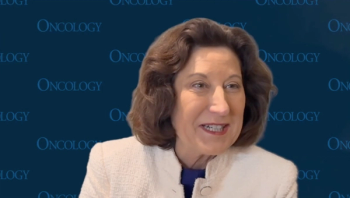
- Oncology Vol 28 No 1S
- Volume 28
- Issue 1S
(P093) Induction Chemotherapy Followed by Concurrent Full-Dose Gemcitabine and Intensity-Modulated Radiation Therapy for Borderline Resectable and Locally Advanced Pancreatic Adenocarcinoma
To evaluate outcomes and toxicity of concurrent full-dose gemcitabine and intensity-modulated radiation therapy (IMRT) for patients with borderline resectable and locally advanced pancreatic adenocarcinoma following induction chemotherapy.
Shahed N. Badiyan, MD, Jeffrey R. Olsen, MD, Andrew Y. Lee, MD, Motoyo Yano, MD, PhD, Christine O. Menias, MD, Shariq Khwaja, MD, PhD, Andrea Wang-Gillam, MD, PhD, Steven M. Strasberg, MD, William G. Hawkins, MD, David C. Linehan, MD, Robert J. Myerson, MD, PhD, Parag J. Parikh, MD; Washington University
Objective: To evaluate outcomes and toxicity of concurrent full-dose gemcitabine and intensity-modulated radiation therapy (IMRT) for patients with borderline resectable and locally advanced pancreatic adenocarcinoma following induction chemotherapy.
Methods: From 2009 to 2012, a total of 32 patients were treated with concurrent gemcitabine and IMRT for borderline resectable or locally advanced pancreatic adenocarcinoma. All patients received induction FOLFIRINOX (folinic acid, fluorouracil [5-FU], irinotecan, oxaliplatin) or gemcitabine-based chemotherapy prior to chemoradiation. The radiotherapy volume was limited to the primary tumor, and the median dose was 55 Gy in 25 fractions. Gemcitabine was administered weekly during radiotherapy on Days 1, 8, 22, and 29 at a median weekly dose of 800 mg/m2. Freedom from local and distant progression and overall survival (OS) were calculated using the Kaplan-Meier method and compared between groups using Kaplan-Meier log-rank statistics. Cox proportional hazards model was used for univariate and multivariate analysis.
Results: Twenty-five patients had locally advanced disease, and seven had borderline resectable disease. Median follow-up time was 14.6 months. Median progression-free survival (PFS) and OS were 13.9 months and 23.1 months, respectively. A radiographic complete or partial response was achieved in 13 patients (41%), with 4 (13%) patients having complete radiographic responses. Surgical resection was performed in 10 patients (31%): 6 patients with locally advanced disease and 4 with borderline resectable disease. Grade 3/4 hematologic toxicity during and up to 6 weeks after chemoradiation occurred in 12 patients (38%); grade 3 nonhematologic toxicity occurred in 7 patients (22%), with no grade 4 or 5 toxicity. All patients completed their radiotherapy. There was a trend toward improved OS for patients receiving induction FOLFIRINOX compared with gemcitabine-based therapy (median not reached vs 22.1 mo; P = .08). There was an improvement in OS in patients who were able to undergo a pancreatectomy compared with those who did not undergo a pancreatectomy (median not reached vs 19.9 mo; P = .001). On univariate analysis, undergoing a pancreatectomy was the only treatment factor associated with OS (hazard ratio [HR] = 0.11; P = .005). No other patient, disease, or treatment factors were identified to be associated with OS.
Conclusion: Concurrent full-dose gemcitabine and limited-field IMRT after induction chemotherapy for the treatment of borderline resectable and locally advanced pancreatic cancer is promising with acceptable toxicity rates.
Articles in this issue
Newsletter
Stay up to date on recent advances in the multidisciplinary approach to cancer.

















































































